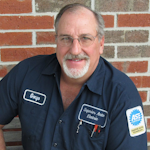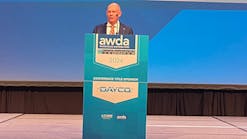As a shop owner, I always had to weigh out the advantages and pitfalls of a new technology and how it was going impact my business bottom line. In the automotive repair business there’s always some new tool that’s going to make my job quicker and easier than before. You have to ask yourself, “Will my initial investment become next year’s write off? Will that piece of equipment sit in the corner of the shop gathering dust? Or, will I get a positive return on all the time and effort I’ve put into it?”
If a shop owner is considering an addition to the shop’s ever growing skillset, try ADAS calibration. ADAS (Advanced Driver Assistance System) is one system that I believe will pay off for the right shop. Right now, fewer than 25 percent of ADAS equipped vehicles are capable of “in car” (Dynamic) diagnostics and self-calibration. That leaves at least 75 percent of systems that will require an in-house (Static) camera alignment and diagnostics by a repair shop, and that’s where you (the shop owner) come into the picture.
Technicians may find several reasons to perform a recalibration. Some of these items may seem a little peculiar to a customer at first, however, once they understand the importance of recalibrating the system they’ll be happy to have it done.
When to calibrate?
There are many reasons why a car would need to have the ADAS re-calibrated. Some will be obvious, such as a broken windshield. But even repairs a technician normally wouldn’t think would have anything to do with the ability of the car to see through its camera can actually benefit from recalibration. These include wheel alignments, tire size change or changed suspension angles. Even tire pressure and trunk cargo can change the camera’s viewpoint.
As newer technologies are added to vehicles and existing technologies are improved, the ADAS will continually gain more ground in the industry as a required feature in every vehicle. For a list of ADAS beyond adaptive cruise control, blind spot monitoring and forward collision avoidance, refer to the “What does ADAS entail?” sidebar.
So where to begin? What do I (as the shop owner/manager) need to know before getting into ADAS calibration as part of my business portfolio?
Consider your space
The area of the shop needs to be perfectly flat with floor surface that is as smooth as possible. It should be free of loose flying debris such as body filler dust or brake dust. Put some thought into a safety barrier so no one walks into the testing area once a calibration has started. Be sure the lighting in the test area is adequate and not so harsh or glaring as to affect the laser light from the testing apparatus.
Each tool manufacturer will have a minimum and maximum service area size. Shops can check this by placing a vehicle at a prescribed distance from the sensor plates, as laid out by the manufacturer’s scanner specifications. Center the tester and follow the procedures to align the axles to a 90-degree angle to the scanning device. A good reference size would be to think of it as about the space needed for a front end alignment machine.
To use Autel’s complete (meaning all around the vehicle) system, for example, shop owners will need to dedicate a 16’ by 30’ bay area.
“It can be done on an alignment rack as long as the rack is one without posts extending above the ramps,” says Michael Flink, Autel’s North America commercial sales manager and trainer. “In addition to the kit they will need an Autel scanner. They can purchase our MSADAS unit, and if they already own an Autel MS908 or higher platform they can purchase an ADAS application upgrade as a one-time add-on to their tool.”
The company Consolidated Systems of New England (CAS) also offers tools for calibration.
According to CAS President John Jenkins, customers can purchase their Opti-Aim System at one of three levels: a base kit, pro kit or master kit. Here too, floor space should be considered.
“Typically the Honda series is the worst and can ask for up to 30 feet in front of the vehicle,” Jenkins says. “Most vehicles need much less space. In the case of Mercedes the target is set almost directly over the hood ornament.”
Find out what’s included with the cost
Equipment cost varies. But, more importantly, it’s what shops are getting for their investment. Tech support is an important consideration to think about. Some manufacturers offer remote viewing to help the customer run through any problems, as well as remote calibration where the technician simply sets it all up and they do the rest.
In addition to camera calibration, the Autel ADAS Calibration tool package offers technicians radar and night vision tools. Autel’s Flink says durable radar based systems are ideal for more commonly impacted vehicle areas like bumpers.
Shops may find that having the most cost effective system may or may not be the perfect fit because of the retooling, or tech support side of it. Having that extra help from knowledgeable staff may save time and money in the long run, and can make an even bigger difference in the shop’s next ROI.
Make training a priority
Training may actually turn out to be the easy part. If a shop has done any type of front end alignment using the black and white dots mounted onto the wheels, they’re more than halfway there in understanding the setup on an ADAS. Every manufacturer offers some form of training, as well.
Jenkins says the time it takes to learn CAS equipment is short, a few hours at best.
“The learning that is required is more focused on the procedure rather than the equipment,” he says.
Flink says Autel’s system offers technicians step by step instructions.
“If they are familiar with scan tools a technician could be ready in just a couple of hours or less,” he says. “Usually after three to five calibrations they will be very comfortable with the process.”
Generally, the whole process of calibrating a vehicle can be done in an hour or so. However, some system requirements may lengthen the process to as much as four hours. So, shops should be sure to prepare their staff and allot the amount of time necessary.
Research your neighborhood
This is probably the one thing that can be a deal breaker. The shop location is important and has to be considered when venturing off into the world of ADAS calibration. Most of this work isn’t going to be for “regular” customers, but more than likely a body shop, or a string of body shops and several glass shops. Of course, there are always city, municipal, fleet and state vehicles that will need such services, too.
This might be a good time for a shop owner to stretch their legs a bit and take a little stroll around the block. They should introduce themselves and their equipment to some of the body shops and windshield installation companies close by. Find out if they’re doing this type of work in-house, or if they are looking for some place that does it. Pricing each job is a matter of area and availability. Too high, and the shop has cut itself out; too low and the flood gates may open up. So, pricing is important.
Where’s the equipment?
Outside of purchasing directly from the manufacturer’s equipment supplier, there are several sources for calibration scanners and the needed alignment tools. AirPro Diagnostics, Autel and Consolidated Automotive Systems of New England (CAS) are a few of the companies that offer equipment to handle recalibrating the ADAS and ACC (Adaptive Cruise Control) systems.
ADAS are here to stay, and they’re becoming more advanced with each new model release. They utilize radar, infrared, LIDAR, computer imaging and analysis, as well as sensors for motion, heat and sound, and soon car-to-car networking with stored data about every conceivable road condition down to the millimeter and with real-time accuracy.
This is a new era of diagnostics and technology to a degree that nobody from just a few generations ago could have ever imagined. We’re no longer waiting for all this ‘advanced technology’ to show up; it’s already here.



